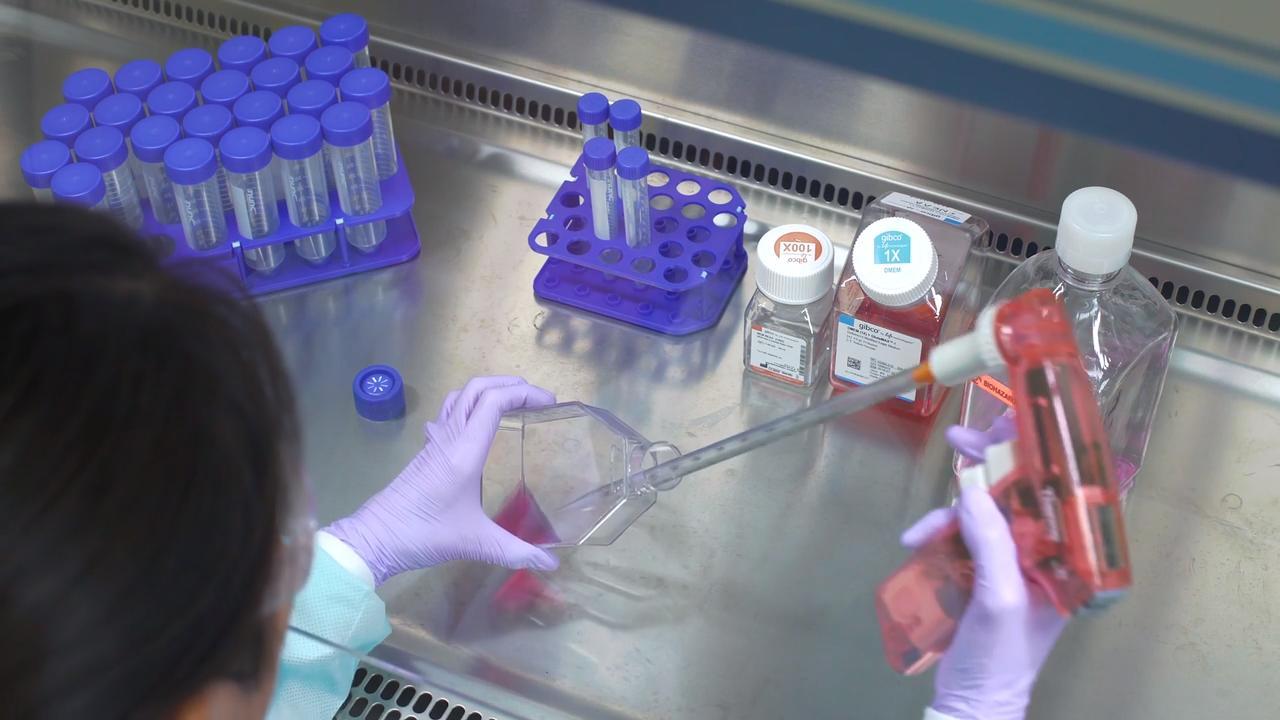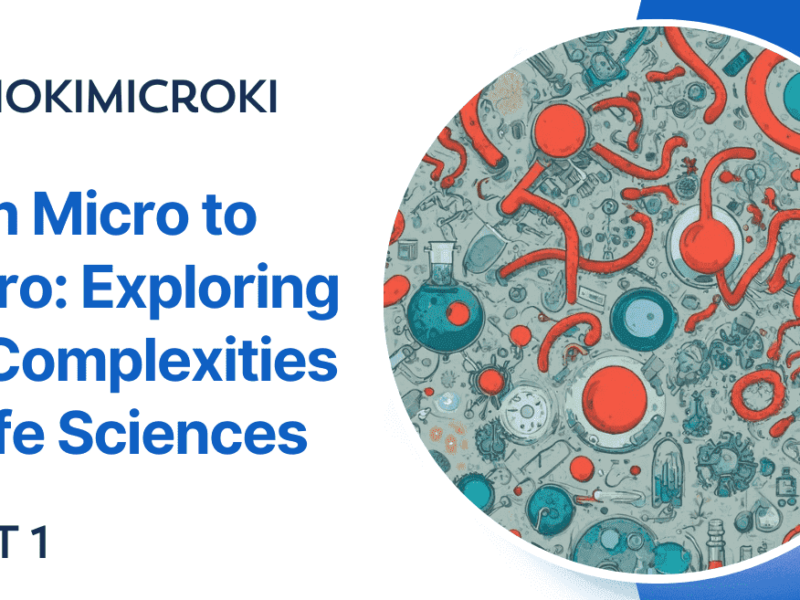Animal Cell culture is a technique of growing animal cells in artificial media and laboratory conditions. In order to grow in the laboratory, the cells are isolated from host and inoculated in appropriate media. The function of media is to provide all the essential nutrients that are required for growth and multiplication.
The in-vitro method of culturing animal cells is similar to plant tissue culture and microbial culture. But Handling the animals cells are very difficult as compared to plant and microbes.
General Step for culturing animal cells –
- Isolate the cells from the host using sharp scalpel.
- Disrupt the tissue either mechanically or enzymatically (trypsin or collagenase) in sterile environment. Collagen hold and anchor the cells of tissue to each other. For cell culture, we need to separate the individual cells.
- In sterile environment, the isolated cells are inoculated in the appropriate media.
- The inoculate plate or flask are incubated in CO2 incubator.
- The cells’ growth is constantly observed and characterized. Utmost care is taken to avoid contamination.
- When required, the cells are sub-cultured in the fresh media.
- The cultured cells are used for further studies of genetic manipulations.
You might have observed that steps are similar to microbiological and plant tissue technique
Media Composition of Animal Cell Culture media –
- Similar to plant and microbes, the animal cell needs Carbon, Nitrogen, Phosphorous, Sulphur, energy source, ions, vitamins etc.
- The preferred energy source are glucose and fructose.
- The nitrogen is provided in the form of amino acids
- Vitamins – Riboflavin, Pantothenic Acid, Folic Acid, Ascorbic Acid, Thiamine, Pyridoxine etc (the vitamins acts like cofactors for many enzymes).
- Fatty acids or Cholestrerol
- Inorganic ions/salt – Calcium, Magnesium, Potassium, Sodium etc
- Antibiotics are added to protect the culture from contamination.
- Growth factors and hormones are added (it depends on type of the cell).
- DMSO is added as cryopreservant.
Even if animal cell culture media differ in their complexity, most include:
- Amino acids: 0.1-0.2 mM
- Vitamins: 1 microM
- Salts (NaCl) : 150 mM
- KCl : 4-6 mM
- CaCl2 : 1 mM
- Glucose : 5-10 mM
pH –
Animal Cell culture media is in the range of 7 to 7.4 pH. The pH may differs from cell to cell (type). pH indicators are added in order to note the change in pH. The change of colour of media indicate the change in pH (like litmus paper). Read our article about different pH indicators.
Buffers –
The carbon dioxide present in the atmosphere reacts with water content of media and forms bicarbonate and hydrogen ions due to which the pH become acidic.
CO2 + H2O ↔ H2CO3 ↔ H+ + HCO3–
Hence, in high atmospheric pressure, the media become more acidic.
The added buffer maintain the pH of the media.
Oxygen –
The animal cells are aerobic and hence while culturing, we need to supply oxygen. The cultured cells obtain oxygen from medium in the form of dissolved oxygen. But if its concentration is not maintained then it may lead to produce free toxic radicals. Therefore, we need to add free radical scavengers (glutathione, 2-mercaptoethanol (β-mercaptoethanol) or dithiothreitol to neutralize the toxicity.
Temperature –
For human cell culture, the optimum temperature is 37 ° C. The optimum temperature of any sample depends upon the type of animal. For proper growth, utmost care need to be taken in order to maintain the temperature.
Osmolality–
The osmotic pressure is another vital factor that need to be considered while culturing cells. The tolerance varies from cell to cell (type). The osmolarity is constantly measured using osmometer.
The above conditions improves the clonal growth.
Types of Media –
- Natural media – The natural media are made from original biological source like body fluids, tissue extract or blood clots. The composition of natural media cannot be defined.
- Artificial media – A media prepared from known concentration of all known nutrients and salts with appropriate oxygen, C02 and pH is called as Artificial media.
- Conditioned media – It is the media harvested from earlier cultured cells. It is rich in metabollites, amino acids, growth factors like interleukins, EGF (epidermal growth factor), and PDGF (platelet-derived growth factor and extracellular matrix such as collagen, fibronectin, and various proteoglycans.
References –
https://www.ncbi.nlm.nih.gov/pmc/articles/PMC7325846/
https://www.corning.com/catalog/cls/documents/application-notes/CLS-AN-042.pdf
Dr. Sangha Bijekar has 9 years of Teaching Experience at University level. She loves to get engage in teaching and learning process. She is into blogging from last two years. She intends to provide student friendly reading material. She is avid Dog Lover and animal rescuer. She is learned Bharatnatyam and Katthak Dancer. She is into biking and She also loves to cook.



2 thoughts on “Animal Cell culture Media Composition”